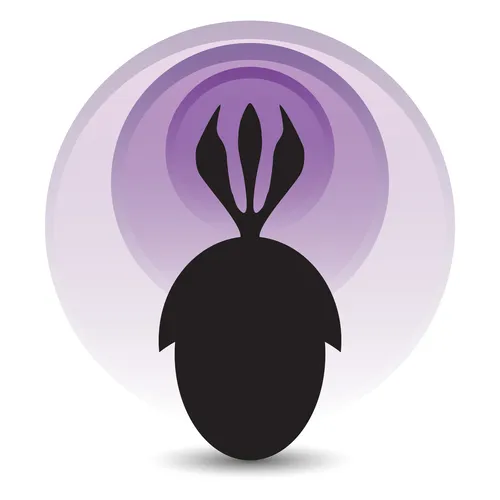
Palaeocast
A free webseries exploring the fossil record and the evolution of life on Earth.
- Update frequency
- every 16 days
- Average duration
- 44 minutes
- Episodes
- 235
- Years Active
- 2012 - 2025

Episode 116: Ice Age Palaeoecology
When we think about the Ice Age or the Pleistocene, we generally think of large animals: wooly mammoths trudging through snow, sabre-tooth tigers taking down their next meal, and big bison out on the…

Episode 115b: Diatoms of Lake Baikal
Part 2.
Diatoms are a major group of algae found in waters all around the world. As photosynthetic phytoplankton, they are hugely important ‘primary producers’, integral to nearly every aquatic food …

Episode 115a: Diatoms of Lake Baikal
Diatoms are a major group of algae found in waters all around the world. As photosynthetic phytoplankton, they are hugely important ‘primary producers’, integral to nearly every aquatic food chain. T…

Episode 114b: Horseshoe Crabs
Part 2 of 2.
The horseshoe crabs (Xiphosura) are a group of large aquatic arthropods known from the East coast of the USA, and the Southern and Eastern coasts of Asia. Despite their name, they are no…

Episode 114a: Horseshoe Crabs
The horseshoe crabs (Xiphosura) are a group of large aquatic arthropods known from the East coast of the USA, and the Southern and Eastern coasts of Asia. Despite their name, they are not actually cr…

Episode 113: PBS Eons
With palaeontology as popular as it is you will never be short of content online, whether that be articles, blogs, podcasts (of which there are now many others you should also be listening to) or vi…

Episode 112: Extinction of the dinosaurs
The end-Cretaceous (or K-Pg) extinction is one of the best known mass extinctions in Earth's history, primarily because that is when non-avian dinosaurs disappeared. Although the popular idea is that…

Episode 111: Diversity in Palaeontology
In this episode, in conjunction with the Society of Vertebrate Paleontology (SVP), we investigate issues of diversity in palaeontology, through interviews with Jann Nassif (PhD student at Ohio Univer…

Episode 110: The Fin-Limb Transition and Early Tetrapod Biodiversity
One of the great themes in palaeobiology is the water-land transition, or how and when the ancestors of today’s four-legged terrestrial animals moved to land. Lines of questioning have included under…

Episode 109: Early Tetrapod Feeding Mechanics
Early tetrapods include the earliest animals to grow legs, and their closest ancestors. Moving from the water to land required a number of changes within the skeleton and muscular system, related to …

04/20 Announcement
Updates about the show and discussion of recent events

Episode 108: Plesiosaurs
Plesiosaurs are some of the most easily recognisable animals in the fossil record. Simply uttering the words ‘Loch Ness Monster’ can conjure a reasonably accurate image of what they look like. Thanks…

Episode 107b: Nomenclature
Part 2.
Names can provide a large amount of information about the heritage of an individual, the purpose of a product or even the characteristics of an organism. With so much in a name, are there rul…

Episode 107a: Nomenclature
Names can provide a large amount of information about the heritage of an individual, the purpose of a product or even the characteristics of an organism. With so much in a name, are there rules gover…

Episode 106: Herpetology
Herpetology is the study of reptiles, amphibians and caecilians. This includes frogs, salamanders, crocodiles, snakes, lizards and tuatara, to name just a few. These cold-blooded tetrapods have an ev…

Episode 105: Ferrodraco
Australia has many fossils from all ages, including several dinosaurs known exclusively from this time and place. However, they are not well known for their pterosaur fossils, having only a handful …

Episode 104: Ediacaran Developmental Biology
The Ediacaran Period is host to the first large and complex multicellular organisms known in the fossil record. This 'Ediacaran Biota' has long eluded definitive placement on the tree of life, seemin…

Episode 103: Terror Birds
Terror birds, or phorusrhacids as they are known scientifically, are a group of large, flightless birds that lived during the Cenozoic, and truly lived up to their name. Known for their large, powerf…

Episode 102b: Small Shelly Fossils
Between the weird and wonderful rangeomorphs of the Ediacaran Period and the world-famous palaeocommunities of the Burgess Shale, the 'Early Cambrian' is host to a 'waste basket' of fossils untied by…

Episode 102a: Small Shelly Fossils
Between the weird and wonderful rangeomorphs of the Ediacaran Period and the world-famous palaeocommunities of the Burgess Shale, the 'Early Cambrian' is host to a 'waste basket' of fossils untied b…